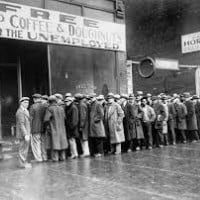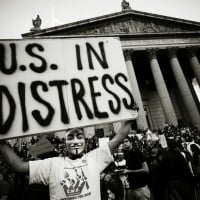Top 10 Worst Economic Recessions/Depressions in the US
Although there is debate on how many recessions the US has been through, the consensus on how these recessions are caused is fairly clear. Declines in production, consumption, investment, and banking are major culprits in these situations, and sometimes they lead to the dragging down of international economies as well (more often now than before). The dates presented on this list earlier than the mid-19th century are mostly debatable, and rates of deflation, unemployment, and other financial struggles are most likely not 100% accurate since these factors were not consistently recorded until the 20th century. It’s mostly up to you to decide which of these recessions were worse than others.
I think it's clear as day that this tops the list. Banking panics, excessive tariffs, and other things led to one of the steepest declines the US economy had ever seen. Production slowed down, unemployment rates skyrocketed, international trade was brought to a halt, and there seemed like little hope was to come out of all this.
Not only affected USA but really, the entire world.

The most recent entry occurred between 2007-09 and resulted in the greatest GDP decline after 1945. The subprime mortgage crisis led to a failure in housing-related assets and several financial institutions falling apart, most famously Lehman Brothers. Stocks plummeted, and the government responded with a bank bailout and a stimulus package.
This is technically 2 recessions in one. Raises in interest rates led to unemployment rates going up. In addition, an oil crisis helped fuel inflation rates which the US was unable to combat properly.
Beginning with the Panic of 1873, the Long Depression lasted until 1879. The largest bank in the US collapsed, the Coinage Act of 1873 hurt the mining industry, and deflation and wage cuts led to labor turmoil, including the Great Railroad Strike of 1877.
There was widespread failure from banks to crops. The cotton market completely collapsed, speculative practices fell when banks stopped using specie payments, and unemployment skyrocketed.
Following WWI, deflation rates went down tremendously. Along with it came a great decline in production. Despite being rather short, the recession was nevertheless a painful experience.
To be fair, it was immediately followed by "The Roaring 20's".
Following the Great Depression came more economic turmoil to come. Tight fiscal policies after the New Deal, tight monetary policies of the a Federal Reserve, and declining profits led to businesses suffering.
It began as a failure in the railroad and banking industries as a result of a speculative bubble bursting. The Panic then led to over 5,000 businesses failing, along with unemployment and protests all over.
Following the War of 1812 was rapid inflation that the US was unable to keep up with. After an 1815 panic came another one in 1819, and a widespread crisis. Banks failed, estate prices collapsed, industries slumped, and things were looking bleak for the economy.
Ongoing as I speak, the COVID-19 outbreak has led to shutdowns all across the globe. But no shutdown has been as disastrous as in the US. The lack of any proper procedures to prevent the spread of the virus has led to businesses shutting down, the stock market crashing, and unemployment rates rising closer and closer to the peak of the Great Depression. Need I mention nearly 200,000 deaths due to COVID-19.
No, interest rates were flat, fuels was flat, this wasn't a recession.
After the Civil War ended the US went into a period of deflation. Financial difficulties and instabilities continued into the Reconstruction Era, and business activity was dropping by the minute.